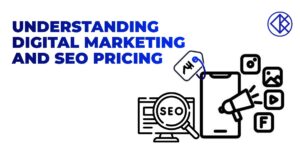
In the constantly developing world of digital advertising, Google’s Performance Max campaigns represent a suggestive shift in how advertisers can leverage machine learning to optimize their ad performance. By combining all Google Ads channels Search, Display, YouTube, Discover, Gmail, and Maps into a single campaign, Performance Max aims to maximize the reach and effectiveness of your advertising efforts. Here’s a deep dive into how this algorithm works and how you can use it to boost your campaign results.
What is Performance Max?
Performance Max (PMax) is an automated campaign type that uses machine learning to optimize ads across all Google inventory. Launched in 2021, it combines multiple ad formats and placements into one campaign, allowing advertisers to focus on their goals rather than individual ad performance on different channels. This consolidated approach enables better performance tracking and resource allocation, making it a powerful tool for advertisers.
How Does Performance Max Work?
Performance Max depends heavily on machine learning and automation. Here’s a breakdown of its key components:
- Asset Groups: Advertisers provide various assets, including text, images, and videos, which are then combined to create dynamic ads acceptable to different placements and audiences. The algorithm tests different combinations to determine the most effective ones.
- Audience Signals: Advertisers can input audience signals to guide the algorithm, helping it understand who the target audience is. These signals can include first-party data, interests, and behaviors. The algorithm uses these signals to find similar audiences and expand reach.
- Bidding Strategies: Performance Max supports various bidding strategies, including maximizing conversions, conversion value, and targeting a specific Return On Ad Spend (ROAS). The performance max ads algorithm adjusts bids in real-time to achieve the advertiser’s goals.
- Insights and Reporting: The campaign provides detailed performance insights, showing which combinations of assets and audience segments are driving results. This data helps advertisers make informed decisions and optimize their campaigns further.
Benefits of Using Performance Max Ads Algorithms
- Unified Campaign Management: By combining multiple ad formats and channels into a single campaign, Performance Max simplifies the management process. This consolidation helps advertisers save time and focus on strategic decisions rather than micromanaging individual campaigns.
- Enhanced Reach and Engagement: Performance Max leverages Google’s vast inventory to deliver ads across various platforms, increasing the chances of reaching the target audience wherever they are. This extensive approach ensures higher engagement and better conversion rates.
- Advanced Machine Learning: The algorithm uses machine learning to optimize ad delivery and performance continually. This constant improvement helps advertisers achieve better results over time without manual interfere.
- Data-Driven Insights: The detailed reporting and insights provided by Performance Max help advertisers understand what works and what doesn’t. This data-driven approach enables continuous optimization and better ROI.
Setting Up a Performance Max Campaign
- Define Your Goals: Start by setting clear objectives for your campaign, such as increasing sales, generating leads, or boosting brand awareness. These goals will guide the algorithm in optimizing your ads.
- Create Asset Groups: Prepare a variety of assets, including headlines, descriptions, images, and videos. Ensure they are high-quality and relevant to your audience. The algorithm will test different combinations to find the most effective ones.
- Set Audience Signals: Provide audience signals to help the algorithm understand your target audience. Include first-party data, demographic information, interests, and behaviors to refine the targeting process.
- Choose Bidding Strategies: Select a bidding strategy that aligns with your campaign goals. Whether you want to maximize conversions or target a specific ROAS, the algorithm will adjust bids to achieve your objectives.
- Monitor and Optimize: Once your campaign is live, regularly review the performance insights and reports. Use this data to make informed decisions and optimize your campaign for better results.
Best Practices for Performance Max Campaigns
- Diverse Asset Mix: Provide a wide range of assets to allow the algorithm to test different combinations. This diversity increases the chances of finding the most effective ad formats and placements.
- High-Quality Creatives: Ensure all assets are high-quality and engaging. Compelling headlines, clear images, and professional videos will attract more attention and drive better results.
- Regular Updates: Keep your assets and audience signals up to date. Regularly refresh your creatives and refine your audience targeting to ensure your campaign stays relevant and effective.
- Leverage First-Party Data: Utilize your first-party data to create more accurate audience signals. This data can include customer lists, website visitors, and app users, helping the algorithm target more relevant audiences.
- Analyze Insights: Pay close attention to the performance insights and reports provided by Performance Max. Use this data to identify trends, understand what works, and make data-driven decisions for future campaigns.
Common Challenges and How to Overcome Them
- Lack of Control: Some advertisers may feel they have less control over individual ad placements and formats. To mitigate this, focus on providing high-quality assets and clear audience signals to guide the algorithm effectively.
- Complex Reporting: The comprehensive nature of Performance Max can make reporting seem complex. Take the time to understand the insights and use them to your advantage, focusing on the overall performance rather than getting bogged down by details.
- Initial Learning Phase: The algorithm may take some time to learn and optimize your campaign. Be patient during the initial phase and allow the algorithm to gather enough data to make informed decisions.
Conclusion
Google’s Performance Max campaigns represent a significant advancement in digital advertising, offering a powerful way to unify and optimize ad performance across multiple channels. By leveraging advanced machine learning and automation, advertisers can achieve better results with less manual effort. Best Digital marketing companies By following best practices and continually optimizing based on data-driven insights, you can maximize the potential of your Performance Max campaigns and drive better outcomes for your business.
About Kerplunk Media: Kerplunk Media specializes in digital marketing strategies that elevate brands and drive growth. With a focus on innovative solutions and personalized service. We’re productively provide a Website Development ,Digital Marketing,Video Production,Social Media Marketing and Branding.
Check our website https://www.kerplunkmedia.com/ and https://kerplunkmediachennai.com/.we help businesses navigate the digital landscape and achieve their marketing goals. Connect with us to learn more about how we can help your business succeed on LinkedIn and beyond.





